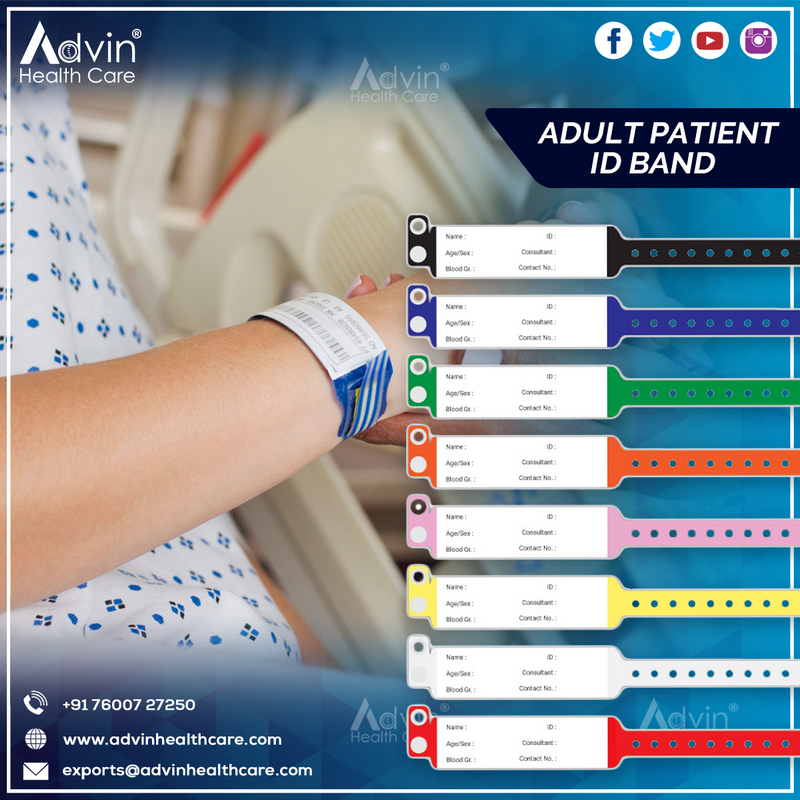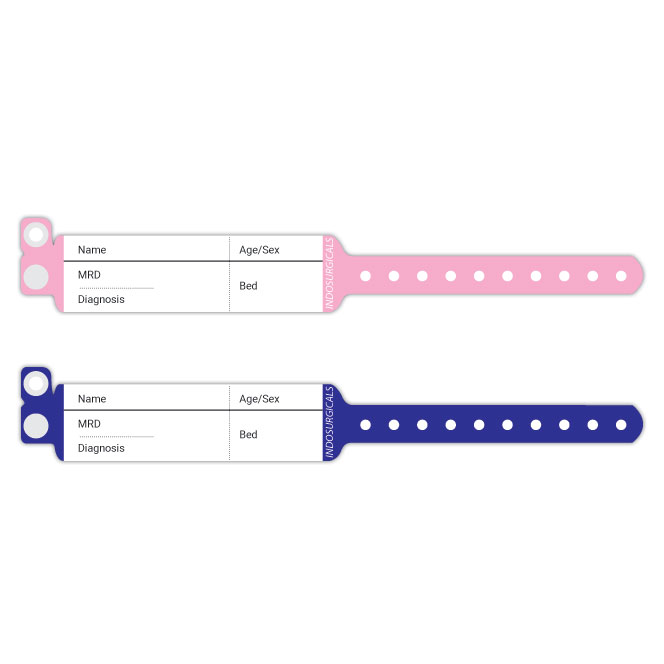A Comprehensive Guide to the Different Types of Patient Identification Band
A Comprehensive Guide to the Different Types of Patient Identification Band
Blog Article
Exploring the Numerous Sorts Of Patient Identification Band Used in Clinical Facilities
In the intricate world of healthcare, the crucial duty of Patient Identification bands often goes unnoticed. These bands, varying from simple paper wristbands to sophisticated RFID bands, create the backbone of Patient safety and security protocols, making certain precision in Patient Identification.
Understanding the Significance of Patient Identification Bands
While they might appear like simple accessories, Patient Identification bands play a vital role in medical centers. These bands offer as an essential tool for validating Patient identity, avoiding medical mistakes associated to misidentification. Patient Identification bands likewise help in enhancing administrative jobs, guaranteeing accurate record-keeping and payment.
Typical Paper Wristbands: Their Usage and Limitations
Conventional paper wristbands have been a staple in Patient Identification throughout different clinical facilities. While their use is widespread, they nurture specific limitations that might impact their effectiveness in Patient administration. This section will certainly focus on the extent of their application and the intrinsic drawbacks related to their usage.
Paper Wristbands: Usage Extent
In the world of Patient Identification, paper wristbands have actually long held an essential function. These bands are typically utilized in outpatient settings, where the Patient's remain is short-lived. Despite improvements in technology, the humble paper wristband remains a cost-effective and dependable service for Patient Identification in numerous medical care circumstances.
Limitations of Paper Wristbands
Regardless of their prevalent use, paper wristbands are not without their downsides. Their physical durability is just one of the considerable constraints. Exposure to water, sweat, or harsh handling can provide them unreadable or perhaps create them to degenerate. Furthermore, paper wristbands usually lack the technological capacities of even more contemporary choices, such as barcoding or RFID chips, restricting their performance to simply displaying written details. The lack of ability to upgrade or customize the data on the wristband is one more shortcoming. Furthermore, if the details is transcribed, clarity can be compromised, leading to prospective misidentification. Paper wristbands can trigger discomfort or skin irritability to some individuals, especially when put on for extensive durations.
Barcoded Wristbands: Developments in Patient Identification
While Patient Identification has long been a critical aspect of healthcare, the arrival of barcoded wristbands signifies a significant jump onward. These bands take advantage of the simpleness of barcoding innovation, permitting Patient info to be quickly scanned and accessed. They boost the rate and accuracy of Patient Identification, lowering the risk of clinical errors associated with misidentification. Barcoded wristbands are affordable, simple to generate, and eliminate handwriting errors typical with hand-operated systems. They are not without restrictions. While they use renovations over conventional bands, the barcode can end up being used or smudged, providing it unreadable. Despite this, barcoded wristbands remain an essential tool in contemporary health care setups, signifying the junction of modern technology and Patient care.
Superhigh Frequency Identification (RFID) Bands: an Action In The Direction Of Futuristic Health Care
The development of Patient Identification bands has actually brought concerning the appearance of Superhigh frequency Identification (RFID) Bands (patient identification band). These cutting-edge tools existing essential advantages for medical care centers, supplying an extra effective and technologically advanced methods of Patient Identification. The implementation of RFID in healthcare is a considerable step in the direction of an extra futuristic method to Patient administration and security
Understanding RFID Bands

RFID Bands: Trick Advantages
Embracing a future where technology and medical care combine, radio regularity Identification bands use a number of essential advantages. Largely, these bands boost Patient safety by offering accurate, instantaneous Identification, consequently decreasing medical mistakes. RFID bands can keep a large quantity of Patient information, including case history and allergies, enabling individualized treatment. They also simplify management tasks, as the automated data access changes manual procedures, enhancing efficiency and lowering documents. RFID bands provide real-time monitoring of clients, critical in high-risk environments such as surgical treatment or intensive treatment. These bands are sturdy and resistant to environmental variables, making sure constant performance. Overall, RFID bands represent a considerable innovation in Patient Identification technology, benefiting both people and health care companies.
Applying RFID in Medical Care
These bands offer a seamless way to track and identify people, guaranteeing their safety and security and boosting efficiency in therapy procedures. RFID bands decrease medical errors by giving accurate Patient Identification, which is critical in stopping misdiagnosis or incorrect medication management. Thus, Click This Link the application of RFID bands is a substantial action in the direction of improving Patient safety and security and health care distribution.

Color-Coded Wristbands: Aiding in Quick and Accurate Diagnosis
In the bustling environment of a clinical center, color-coded wristbands have emerged as vital devices for swift and exact Identification of a patient's medical problem. These wristbands, put on by individuals, bring particular colors that match to different medical problems or conditions. Red could show allergic reaction dangers, while yellow could indicate a fall risk. This system is designed to provide instant aesthetic cues to doctor, boosting Patient safety and care high quality. In emergency scenarios, making use of these wristbands enables fast decision-making. Nevertheless, the performance of color-coded wristbands depends on the uniformity of color analysis across healthcare institutions, needing common criteria for regular application.
Approaches for Effective Implementation and Administration of Patient ID Bands
Attaining optimal use of Patient Identification bands requires a well-structured method for their execution and management. The first step involves training all wellness personnel on the significance of correctly applying and checking out these bands. Second of all, medical facilities ought to standardize making use of ID bands across all departments, making sure harmony and minimizing disparities. Routine audits ought to be carried out to confirm adherence to plans and to fix any kind of variances. Patient education is additionally crucial; patients have to recognize the purpose of the bands and the need for their consistent wear. patient identification band. It's vital to have a back-up strategy in location, such as barcode scanning or biometrics, to ensure that Patient Identification is never ever jeopardized.
Final thought
Patient Identification bands are crucial in clinical centers to make sure safety and accuracy. Reliable execution and management of these bands can substantially lower medical errors, increase effectiveness, and enhance total Patient care.
These bands, varying from easy paper wristbands to innovative RFID bands, create the foundation of Patient safety and security protocols, guaranteeing precision in Patient Identification.The advancement of Patient Identification bands has actually brought concerning the emergence of Radio Frequency Identification (RFID) Bands. Overall, RFID bands represent a significant development in Patient Identification technology, benefiting both clients and health care service providers.
RFID bands decrease medical errors by providing accurate Patient Identification, which is crucial in preventing misdiagnosis or wrong medication management. Patient education and learning is additionally critical; people must recognize the objective of the bands and the requirement for their continuous wear.
Report this page